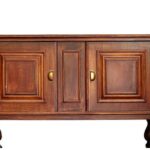Selling on Facebook Marketplace has become one of the most effective ways to reach potential buyers quickly without investing in expensive advertising. Millions of people log into Facebook daily, and many of them use the Marketplace feature to find everything from home furniture to electronics, clothing, vehicles, and even real estate. If used strategically, this platform can generate consistent sales and help sellers establish a trustworthy online presence. The key is not just listing an item but knowing how to optimize the entire process—from product presentation to customer communication—to attract the right buyers and close deals faster.
Why Facebook Marketplace Is an Opportunity for Sellers
Facebook Marketplace is not just another online selling platform it is integrated into one of the largest social media networks in the world. Unlike traditional e-commerce platforms, you don’t need a separate account, a website, or a heavy investment in advertising to start selling. Your potential buyers are already using Facebook daily, which makes it easier to position your products in front of them.
Another major advantage is Facebook’s location-based targeting. Buyers see listings in their local area, which means you can reach people who are ready to purchase and willing to meet up in person. This drastically reduces shipping costs and delivery delays. Additionally, Facebook Marketplace does not charge listing fees, allowing you to keep more of your profits.
How to Post Items on Facebook Marketplace for Maximum Sales
This guide is designed to help you understand proven strategies that improve visibility, attract serious buyers, and increase your conversion rate when selling on Facebook Marketplace.
Step 1: Choose the Right Product to Sell
Before you post anything, you need to evaluate the product. Not every item will perform well on Facebook Marketplace, so choosing the right product category is essential. Items that typically sell fast include home appliances, electronics, clothing, kids’ items, and vehicles. People often browse Marketplace for bargains or second-hand goods that still have value, so ensure your item fits this demand.
Do research by searching for similar products on the Marketplace. Check the prices, the quality of images used, and how often the items are listed. This will give you insight into what buyers are currently interested in and how you can position your product to stand out.
Step 2: Take High-Quality Photos
The first thing buyers notice is the product image. Poor-quality photos will make buyers scroll past your listing, while high-quality, clear photos create trust and encourage clicks. Use natural lighting whenever possible, and photograph the item from multiple angles. If the product is small, consider using a plain background to eliminate distractions.
Showcase any important details such as brand logos, product tags, or accessories included in the sale. Avoid overly filtered images because they can make the product look different from reality, which may disappoint buyers during inspection. Remember that honesty in presentation reduces complaints and increases the chance of repeat buyers.
Step 3: Write a Compelling Title
Your title should be short but descriptive enough for the buyer to know what you are selling. Instead of simply writing “Laptop,” you could write “Dell Inspiron 15 Laptop – 8GB RAM, 256GB SSD.” Specifics like brand, size, or condition increase the chances of your listing appearing in searches and attracting qualified buyers.
When possible, include keywords that buyers are likely to search for. For example, instead of “Sofa,” use “3-Seater Leather Sofa – Excellent Condition.” This not only clarifies what you’re selling but also makes your post stand out among dozens of generic listings.
Step 4: Craft a Detailed Description
Your description should answer common buyer questions before they even ask. Include details about the product’s condition, size, specifications, brand, color, and age. Be transparent about any wear and tear to avoid wasting time with uninterested buyers.
A good description also helps establish trust. For example, if you’re selling a used phone, mention how long you’ve had it, whether it still has a warranty, and if it comes with original accessories. The more informative your listing, the fewer repetitive questions you will receive in your inbox.
Step 5: Set a Competitive Price
Pricing can determine whether your item sells quickly or stays on the platform for weeks without attention. Research the going rate for similar items in your area. If you set the price too high, buyers may ignore your listing; too low, and you may lose potential profit.
Consider leaving room for negotiation since many buyers expect to bargain. For instance, if you want $100, list the item at $110 or $120 so that when buyers negotiate, you can settle closer to your target price. Transparent pricing makes your listing look more professional and attracts serious buyers.
Step 6: Select the Right Category and Tags
Placing your item in the correct category increases visibility. If you’re selling electronics, don’t list them under “Household Items,” as this reduces the chances of reaching your target audience. Facebook provides categories such as Vehicles, Furniture, Clothing, and Electronics. Choose the most accurate one to ensure your listing appears in relevant searches.
Additionally, use tags strategically. Tags act as keywords that boost your visibility in Marketplace search results. Think about what words potential buyers would type when looking for your item and include them naturally.
Step 7: Enable Delivery or Pickup Options
Offering flexible delivery and pickup options can give you an edge over other sellers. Some buyers prefer local pickup, while others may want doorstep delivery. If possible, provide both. Offering delivery can also expand your reach beyond your immediate location, increasing your chances of making a sale.
For higher-value items, always meet in safe, public places. Facebook also recommends meeting at designated “safe exchange zones,” often available at police stations, to protect both parties.
Step 8: Respond Quickly to Messages
Speed of response can make or break a sale. Buyers often message multiple sellers at once, so the first person to reply usually gets the deal. Turn on notifications for Messenger and reply with clear, professional answers. If the buyer asks a question already covered in your description, politely direct them to the details.
Being courteous and professional in your communication not only secures the sale but also encourages positive reviews, which increase your credibility in future transactions.
Step 9: Boost Your Listings with Ads
While Facebook Marketplace is free, boosting your listing with paid ads can dramatically increase visibility, especially if you’re selling high-value or competitive items. Sponsored listings appear higher in search results and are shown to more buyers in your area.
When creating an ad, target your audience carefully by selecting age, location, and interests. This ensures your ad reaches people most likely to purchase. Even a small budget can yield significant returns if managed strategically.
Step 10: Build a Positive Seller Reputation
Your reputation as a seller plays a huge role in long-term success. Encourage buyers to leave positive feedback after each transaction. High ratings make your profile trustworthy and attract more buyers. Always deliver what you promise, avoid canceling confirmed deals, and maintain professionalism in every interaction.
Over time, this credibility can position you as a go-to seller in your niche, leading to repeat customers and referrals.
Common Mistakes to Avoid When Posting Items on Facebook Marketplace for Maximum Sales
Many sellers fail to generate sales because they overlook simple but critical details. Some of the most common mistakes include:
- Using blurry or low-quality photos.
- Writing vague titles such as “Nice Bag” instead of descriptive ones.
- Ignoring buyer messages or responding too slowly.
- Overpricing items without considering the competition.
- Misclassifying items under the wrong categories.
Avoiding these mistakes not only improves your chances of making a sale but also ensures a smoother, more professional selling experience.
Conclusion
Facebook Marketplace is more than just a casual selling tool—it’s a powerful platform that can help individuals and businesses maximize sales without high overhead costs. By focusing on quality photos, compelling titles, detailed descriptions, competitive pricing, and excellent communication, you can attract more buyers and close deals quickly. Combining these strategies with paid ads and a strong seller reputation creates a long-term sales channel that continues to generate income. If your goal is to boost sales and build trust with buyers, following the right approach will make all the difference. With consistency, professionalism, and the right strategies, Facebook Marketplace can become a reliable source of revenue and growth.









